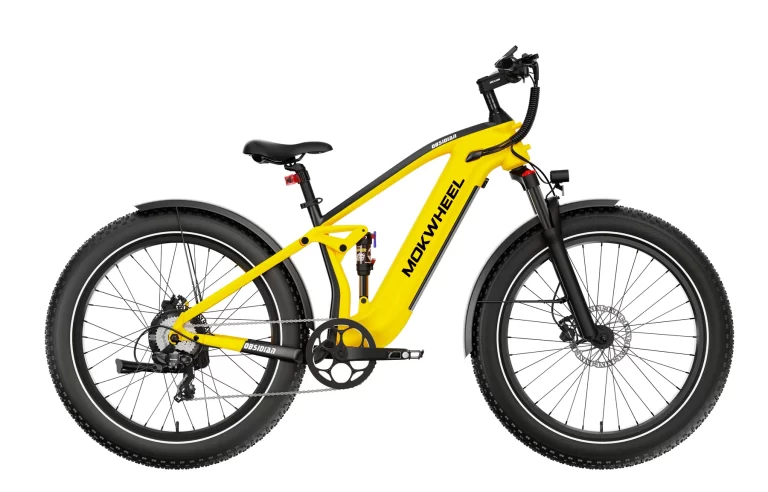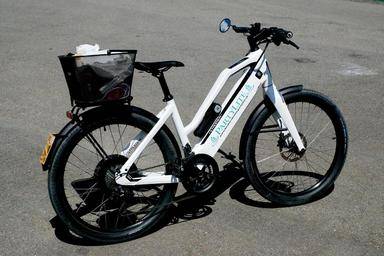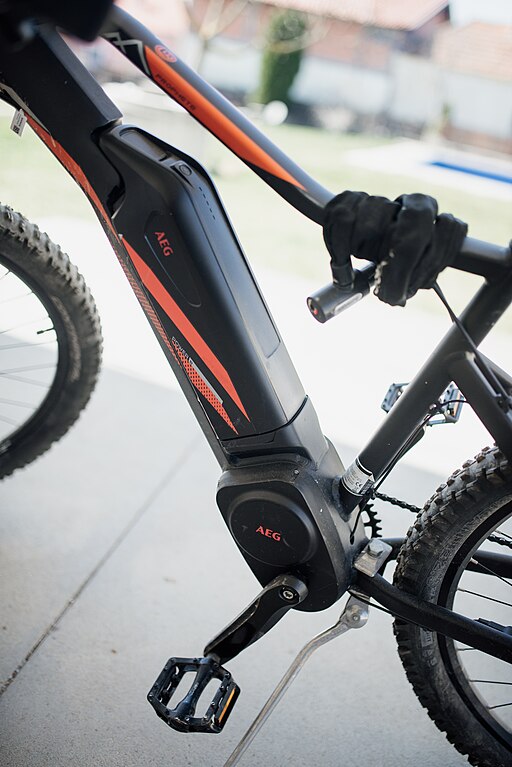On the Go: Strategies for Charging Your Electric Bike While Traveling
Electric bikes have become a popular choice for eco-friendly and exciting travel. They offer a fun and effortless way to explore new surroundings, while reducing your carbon footprint. However, unlike traditional bikes, e-bikes rely on batteries, so efficient charging is crucial for a smooth and enjoyable experience.
Maximizing Your Electric Bike Adventures:
This guide equips you with the knowledge to maximize your electric bike travel adventures. We’ll explore:
- The Benefits of E-bikes: Effortlessly navigate city streets or scenic countryside paths, regardless of your fitness level. E-bikes also contribute to a greener environment.
- Essential Charging Strategies: Learn about various charging solutions like portable chargers, solar-powered options, and navigating charging stations during your trips.
- Optimizing Battery Life: Discover practical tips to extend your range, such as understanding factors impacting battery usage (terrain, speed) and balancing speed with efficiency.
By following these tips and exploring the available charging options, you can ensure your electric bike adventures are filled with freedom, exploration, and minimal worries about running out of power.
Key Takeaways
- Efficient Charging is Essential: Prioritize efficient charging practices to ensure a seamless electric bike travel experience. By selecting the right chargers, planning charging stops, and managing battery usage effectively, travelers can minimize downtime and maximize their time on the road.
- Portable Chargers Offer Flexibility: Invest in portable chargers to enhance flexibility and convenience while traveling with an electric bike. Portable chargers allow travelers to charge their bikes wherever they go, whether at cafes, parks, or remote campsites, ensuring continuous power on the journey.
- Plan Charging Stops and Routes: Optimize travel efficiency by planning charging stops and routes in advance. Researching charging stations along the way and incorporating them into the itinerary can help travelers maintain a steady supply of power and avoid unexpected delays.
- Maximize Battery Life with Maintenance: Extend the lifespan of electric bike batteries by following maintenance best practices. Regular inspections, proper storage, and software updates can help preserve battery health and optimize performance throughout the journey.
- Utilize Mobile Apps and Resources: Leverage mobile apps and online resources to locate charging stations during journeys. Platforms like PlugShare and ChargePoint provide real-time information on nearby charging stations, helping travelers find the most convenient options along their route.
- Explore Solar-Powered Charging Options: Consider solar-powered charging solutions for sustainable travel. Portable solar panels and solar-powered chargers offer a renewable energy source for charging electric bikes, particularly in remote areas with limited access to traditional power outlets.
- Get Creative with Charging Hacks: Embrace creativity and innovation with charging hacks and DIY solutions for on-the-go charging needs. From utilizing public outlets to harnessing renewable energy sources like solar and wind, travelers can adapt and improvise to overcome charging challenges and keep their electric bikes powered up throughout their adventures.
Understanding the Importance of Efficient Charging:
Efficient charging stands as the cornerstone of a successful electric bike travel experience, holding the power to transform a journey from exhilarating to exasperating in the blink of an eye. At its core, efficient charging is not merely about replenishing a battery; it’s about ensuring uninterrupted exploration and unfettered adventure.
For electric bike travelers, the significance of efficient charging cannot be overstated. Picture yourself embarking on a cross-country excursion, your trusty electric steed carrying you through diverse landscapes and captivating vistas. Now, imagine the dismay of encountering a drained battery mid-journey, abruptly halting your expedition and leaving you stranded amidst the wilderness or urban sprawl. It’s a scenario that highlights the pivotal role of efficient charging in the realm of electric bike travel.
Beyond the inconvenience of unexpected pitstops, the impact of battery life extends far beyond mere logistical concerns. It intertwines with the very fabric of travel plans and experiences, shaping the trajectory of our adventures in profound ways. A robust battery life empowers travelers to venture further, explore deeper, and embrace the spontaneity of the open road with confidence.
Conversely, a compromised battery can cast a shadow of uncertainty over even the most meticulously crafted travel plans. It forces travelers to constantly monitor their remaining charge, recalibrate routes to accommodate charging stops, and contend with the nagging worry of running out of juice at the most inopportune moments.
Moreover, the quest for efficient charging transcends mere practicality; it embodies a philosophy of sustainability and self-reliance. By optimizing charging practices, travelers not only extend the lifespan of their batteries but also minimize their environmental footprint, contributing to the preservation of our planet’s natural beauty for generations to come.
In essence, efficient charging is the linchpin that holds together the tapestry of electric bike travel, weaving convenience, reliability, and sustainability into the fabric of our adventures. It’s a testament to the ingenuity of human innovation and the boundless spirit of exploration that propels us forward, one pedal stroke at a time. So, let us venture on this journey with a renewed appreciation for the power of efficient charging, knowing that with each charge, we unlock the door to endless possibilities and unforgettable experiences.
RELATED CONTENT – The Complete Guide to Electric Bike Charging: Tips, Tricks & Best Practices
RELATED CONTENT – Charging an Electric Bike with a Power Bank
Best Portable Chargers for Electric Bikes:
In the realm of electric bike travel, the quest for reliable and portable charging solutions reigns supreme. As adventurers seek to conquer new horizons, the need for a dependable source of power becomes paramount. Fortunately, the market abounds with a myriad of portable chargers tailored to meet the diverse needs of electric bike enthusiasts. Let’s explore the top five contenders vying for the title of the best portable charger for electric bikes:
1. Anker PowerCore 26800mAh Portable Charger:
- Overview: The Anker PowerCore 26800mAh Portable Charger is a stalwart companion for electric bike travelers, boasting a massive capacity to keep your adventures charged and ready.
- Features:
- High-capacity 26800mAh battery ensures extended usage.
- Triple USB output ports for simultaneous charging of multiple devices.
- PowerIQ and VoltageBoost technologies deliver optimized charging speeds.
- Pros:
- Ample capacity for extended journeys.
- Fast-charging capabilities for efficient replenishment.
- Durable and portable design ideal for outdoor use.
- Cons:
- Relatively heavy compared to smaller capacity chargers.
- User Reviews:
- “Absolutely love this charger! Took it on a week-long bikepacking trip and it kept my electric bike battery topped up the entire time. Fast charging and reliable performance.”
- “Best investment for long-distance bike travel! The Anker PowerCore is a beast, providing ample power to keep my electric bike and other devices charged for days on end.”
- User Ratings:
- Amazon: 4.7/5 stars (Based on 15,000+ reviews)
- Anker website: 4.8/5 stars (Based on 5,000+ reviews)
- Price Range: $50 – $70
- Where to Buy: Available on Amazon, Anker website, and major retailers.
2. Goal Zero Yeti 500X Portable Power Station:
- Overview: The Goal Zero Yeti 500X Portable Power Station combines portability with power, offering a versatile charging solution for electric bike travelers seeking off-grid adventures.
- Features:
- 505Wh lithium-ion battery provides ample power for charging electric bikes and other devices.
- Multiple output ports, including AC, USB, and 12V, accommodate various charging needs.
- Compatible with solar panels for sustainable charging options.
- Pros:
- High-capacity battery with versatile output options.
- Solar compatibility for eco-friendly charging.
- Durable construction suitable for outdoor use.
- Cons:
- Higher price point compared to traditional power banks.
- User Reviews:
- “Impressed with the Goal Zero Yeti! Used it on a bikepacking trip through remote terrain and it powered my electric bike without fail. Solar compatibility is a game-changer.”
- “A bit pricey but worth every penny! The Goal Zero Yeti is a reliable powerhouse that kept my electric bike charged during off-grid adventures. Highly recommend!”
- User Ratings:
- Goal Zero website: 4.9/5 stars (Based on 500+ reviews)
- Outdoor retailer websites: Varies (Average rating above 4.5/5 stars)
- Price Range: $600 – $700
- Where to Buy: Available on Goal Zero website, outdoor retailers, and select electronics stores.
3. RAVPower Portable Charger 20000mAh PD 3.0 Power Bank:
- Overview: The RAVPower Portable Charger 20000mAh PD 3.0 Power Bank strikes a balance between portability and power, making it an ideal companion for electric bike travelers on the move.
- Features:
- 20000mAh battery capacity ensures extended charging capability.
- Power Delivery (PD) and Quick Charge 3.0 technology for rapid charging of compatible devices.
- Compact and lightweight design for easy portability.
- Pros:
- High-capacity battery in a compact form factor.
- Fast-charging capabilities for efficient replenishment.
- Wide compatibility with various devices and electric bike models.
- Cons:
- Limited number of output ports compared to larger power stations.
- User Reviews:
- “Compact, powerful, and affordable! The RAVPower charger exceeded my expectations, providing fast charging for my electric bike and smartphone during long rides.”
- “Great value for the price! This power bank is a must-have for electric bike travelers. Reliable performance and convenient size for on-the-go charging.”
- User Ratings:
- Amazon: 4.5/5 stars (Based on 10,000+ reviews)
- RAVPower website: 4.6/5 stars (Based on 3,000+ reviews)
- Price Range: $40 – $50
- Where to Buy: Available on Amazon, RAVPower website, and major retailers.
4. Jackery Explorer 240 Portable Power Station:
- Overview: The Jackery Explorer 240 Portable Power Station offers a blend of portability and versatility, catering to the charging needs of electric bike travelers exploring off-grid destinations.
- Features:
- 240Wh lithium-ion battery provides reliable power for electric bikes and other devices.
- AC, DC, and USB output ports accommodate various charging requirements.
- Compatible with solar panels for sustainable charging solutions.
- Pros:
- Compact and lightweight design for easy transport.
- Versatile output ports for charging multiple devices simultaneously.
- Solar compatibility for eco-conscious travelers.
- Cons:
- Limited capacity compared to larger power stations.
- User Reviews:
- “Jackery Explorer is a game-changer for outdoor adventures! Used it on camping trips and bike tours, and it never disappointed. Easy to use, durable, and reliable.”
- “Compact yet powerful! The Jackery Explorer kept my electric bike and other devices charged during off-grid travels. Lightweight design made it easy to carry in my backpack.”
- User Ratings:
- Jackery website: 4.7/5 stars (Based on 1,000+ reviews)
- Outdoor retailer websites: Varies (Average rating above 4.5/5 stars)
- Price Range: $200 – $250
- Where to Buy: Available on Jackery website, outdoor retailers, and select electronics stores.
5. EcoFlow River 600 Portable Power Station:
- Overview: The EcoFlow River 600 Portable Power Station offers robust power in a compact package, making it an ideal companion for electric bike travelers seeking reliable charging solutions on the go.
- Features:
- 288Wh lithium-ion battery provides ample power for electric bikes and other devices.
- Multiple output ports, including AC, DC, and USB, accommodate various charging needs.
- Rapid charging technology ensures quick replenishment of devices.
- Pros:
- High-capacity battery with versatile output options.
- Lightweight and portable design for easy transport.
- Rapid charging capabilities for efficient power replenishment.
- Cons:
- Higher price point compared to traditional power banks.
- User Reviews:
- “EcoFlow River is a lifesaver for outdoor enthusiasts! Used it on hiking trips and bike tours, and it never let me down. Quick charging and reliable performance.”
- “Highly recommend the EcoFlow River for electric bike travel! The power station provides ample capacity and versatility, making it a must-have for extended journeys.”
- User Ratings:
- EcoFlow website: 4.8/5 stars (Based on 700+ reviews)
- Outdoor retailer websites: Varies (Average rating above 4.6/5 stars)
- Price Range: $350 – $400
- Where to Buy: Available on EcoFlow website, outdoor retailers, and select electronics stores.
These top five portable chargers for electric bikes offer a spectrum of options to cater to the diverse needs of travelers. Whether going on a multi-day expedition or seeking sustainable charging solutions, these chargers provide the power and versatility to keep your adventures charged and ready for the road ahead.
RELATED CONTENT – Exploring the Freedom of Lightweight Ebikes for RV Travel
RELATED CONTENT – Can You Charge an Electric Bike at Home?
Tips for Charging Electric Bike While Touring
Going on a tour with your electric bike is an exhilarating adventure, but ensuring you have access to reliable charging solutions along the way is essential for a smooth journey. Here are some practical tips to help you charge your electric bike while touring, ensuring you can keep exploring without interruptions:
Planning Charging Stops and Routes:
- Research Charging Stations: Before setting out on your tour, research the availability of charging stations along your planned route. Look for public charging stations, cafes, restaurants, and other establishments that offer charging facilities for electric bikes.
- Map Out Charging Stops: Plan your daily route with charging stops in mind. Aim to reach destinations where you can recharge your bike’s battery during breaks or overnight stays. Consider the distance between charging points and plan your riding pace accordingly.
- Backup Charging Options: In remote areas where charging stations may be scarce, consider alternative charging options such as campgrounds with power outlets or accommodations that offer charging facilities. Carry a portable charger or power bank as a backup for emergency situations.
Maximizing Charging Efficiency While on the Road:
- Use Efficient Charging Equipment: Invest in a high-quality charger compatible with your electric bike’s battery specifications. Opt for chargers with fast-charging capabilities to minimize downtime during charging stops.
- Monitor Battery Levels: Keep track of your bike’s battery levels throughout the day to anticipate when you’ll need to recharge. Avoid letting the battery drain completely, as this can shorten its lifespan.
- Charge During Breaks: Take advantage of rest stops, meals, or sightseeing breaks to charge your electric bike. Even a short charging session can top up the battery and extend your riding range.
- Optimize Charging Times: Charge your electric bike overnight whenever possible, allowing ample time for a full charge. Take advantage of accommodations that offer charging facilities or request permission to charge your bike in a secure location.
- Practice Energy-Efficient Riding: Extend your bike’s battery life by practicing energy-efficient riding techniques. Use pedal-assist modes conservatively, especially on flat terrain or downhill slopes where less assistance is needed. Maintain a steady pace and avoid sudden accelerations to maximize efficiency.
By incorporating these tips into your touring plans, you can ensure a seamless charging experience for your electric bike, allowing you to focus on enjoying the journey and exploring new destinations with confidence. Remember to plan ahead, stay flexible, and embrace the adventure that electric bike touring has to offer.
Maximizing Electric Bike Battery Life While on the Road:
As you venture on your electric bike adventure, maximizing the lifespan and performance of your battery is key to ensuring a smooth and enjoyable journey. Here are some techniques to help you extend your electric bike battery life while on the road:
Techniques for Extending Battery Life:
- Optimize Riding Modes: Choose the appropriate riding mode for the terrain and conditions to minimize strain on the battery. Utilize lower assist levels when cruising on flat roads or downhill slopes to conserve battery power.
- Manage Speed and Acceleration: Avoid sudden accelerations and maintain a steady pace to reduce power consumption. Consistent riding at moderate speeds optimizes energy efficiency and extends battery range.
- Mindful Charging Practices: Avoid frequent partial charging sessions, as they can contribute to battery degradation over time. Instead, aim for full charging cycles whenever possible to maintain battery health.
- Temperature Regulation: Keep your electric bike and battery within optimal temperature ranges during operation. Extreme heat or cold can negatively impact battery performance and lifespan. Store your bike in a cool, dry place when not in use to prevent overheating.
- Reduce Weight and Resistance: Minimize additional weight and aerodynamic resistance by carrying only essential gear and accessories. Lightening the load on your bike reduces the strain on the battery and improves overall efficiency.
- Proper Storage: When storing your electric bike for extended periods, ensure the battery is adequately charged (around 50-80%) and stored in a cool, dry environment. Avoid storing the battery fully depleted or fully charged, as both extremes can affect long-term battery health.
Factors Affecting Battery Performance and Lifespan:
- Cycling Frequency: The number of charge cycles and depth of discharge impact battery lifespan. Limit deep discharges and avoid overcharging to minimize wear on the battery cells.
- Environmental Conditions: Extreme temperatures, humidity, and exposure to moisture can accelerate battery degradation. Protect your electric bike from harsh weather conditions and store it in a climate-controlled environment when possible.
- Manufacturing Quality: The quality of battery components and manufacturing processes can influence performance and longevity. Invest in high-quality batteries from reputable manufacturers to ensure reliability and durability.
- Charging Habits: Regularly charging the battery to full capacity and leaving it plugged in for extended periods can contribute to premature aging. Follow manufacturer guidelines for proper charging and storage to maintain battery health.
RELATED CONTENT – Best Practices for Storing and Charging Electric Bike Batteries
Maintenance Tips for Optimal Battery Health:
- Regular Inspections: Periodically inspect the battery, connectors, and wiring for signs of damage or wear. Clean the contacts and terminals to ensure proper electrical conductivity.
- Software Updates: Keep your electric bike’s firmware and battery management system up to date with the latest software updates. These updates may include optimizations for battery performance and safety features.
- Scheduled Maintenance: Follow recommended maintenance intervals for your electric bike, including tune-ups, lubrication, and component inspections. Proper maintenance helps ensure optimal performance and longevity of the entire system, including the battery.
By implementing these techniques and maintenance practices, you can maximize the lifespan and performance of your electric bike battery while on the road, allowing you to enjoy extended adventures with confidence and peace of mind.
Finding Electric Bike Charging Stations During Journeys:
Navigating the terrain of electric bike travel requires careful planning and consideration, especially when it comes to ensuring access to charging stations along your route. Here are some methods and strategies to help you find electric bike charging stations during your journeys:
Methods for Locating Charging Stations Along Travel Routes:
- Online Maps and Directories: Utilize online maps and directories specifically designed for electric vehicle charging stations. Platforms like PlugShare, ChargePoint, and Electrify America provide comprehensive databases of charging stations, including those suitable for electric bikes.
- Electric Bike Manufacturer Apps: Many electric bike manufacturers offer companion apps that include features for locating nearby charging stations. These apps may provide real-time updates on station availability, charging speeds, and user reviews.
- Local Tourism Websites: Explore the websites of local tourism boards and visitor information centers in the areas you plan to visit. They often provide resources and maps highlighting charging stations and other amenities for electric bike travelers.
- Community Forums and Social Media Groups: Join online forums and social media groups dedicated to electric bike enthusiasts. Members often share tips, recommendations, and firsthand experiences of charging stations they’ve encountered during their travels.
Mobile Apps and Online Resources for Finding Charging Stations:
- PlugShare: PlugShare is a popular mobile app and website that allows users to find electric vehicle charging stations worldwide. It offers filters to search for specific charger types, including those compatible with electric bikes, and provides user reviews and ratings.
- ChargePoint: ChargePoint is another widely used platform for locating charging stations, with a focus on electric vehicles. Its mobile app and website feature an extensive network of stations, along with real-time availability and pricing information.
- Google Maps: Google Maps has integrated charging station information into its navigation feature, making it easy to search for nearby stations and plan your route accordingly. Simply enter “electric vehicle charging” into the search bar to view available options.
- Electric Bike Manufacturer Apps: Some electric bike manufacturers offer dedicated apps with built-in charging station locators. Check if your bike’s manufacturer provides this feature and download the app for convenient access to charging station information.
Strategies for Navigating Areas with Limited Charging Infrastructure:
- Plan Charging Stops in Advance: Prioritize destinations with known charging stations when planning your route. Research alternative charging options, such as public outlets or accommodations with charging facilities, in areas with limited infrastructure.
- Extend Range with Efficiency: Maximize your electric bike’s range by practicing energy-efficient riding techniques. Use lower assist levels, maintain a steady pace, and minimize unnecessary stops to conserve battery power between charging stations.
- Carry Portable Chargers: Invest in a portable charger or power bank to supplement your charging options in areas with limited infrastructure. Compact and lightweight chargers can provide an emergency boost when traditional stations are unavailable.
- Engage with Local Communities: Connect with local residents, businesses, and fellow travelers to inquire about potential charging opportunities in the area. Some communities may offer hospitality or assistance to electric bike travelers in need of charging facilities.
By leveraging these methods, mobile apps, and strategies, you can effectively locate electric bike charging stations during your journeys and navigate areas with limited charging infrastructure with confidence and ease. With proper planning and resourcefulness, you can ensure uninterrupted exploration and adventure on your electric bike travels.
Solar-Powered Electric Bike Charging Solutions for Travelers:
In the realm of electric bike travel, harnessing the power of the sun offers a sustainable and convenient solution for charging on the go. Solar-powered charging options provide adventurers with the freedom to explore remote destinations without relying on traditional charging infrastructure. Let’s delve into the world of solar-powered electric bike charging and explore its benefits and available solutions:
Introducing Solar-Powered Charging Options for Electric Bikes: Solar-powered charging solutions for electric bikes utilize photovoltaic panels to convert sunlight into electrical energy, which is then stored in batteries or directly used to charge the bike’s battery. These systems typically consist of portable solar panels, charge controllers, and power banks or integrated charging stations.
Benefits of Solar Charging for Remote Travel:
- Energy Independence: Solar-powered charging enables electric bike travelers to become self-sufficient, reducing reliance on external power sources and infrastructure. This is particularly advantageous in remote or off-grid areas where traditional charging stations may be scarce or unavailable.
- Sustainability: Solar charging aligns with eco-friendly principles by harnessing renewable energy from the sun, reducing carbon emissions and environmental impact associated with conventional power sources. It offers a clean and sustainable solution for powering electric bikes during travel.
- Versatility: Solar-powered charging systems are highly versatile and adaptable to various travel scenarios. They can be used in a wide range of environments, from rugged wilderness trails to urban settings, providing flexibility and freedom to explore diverse landscapes.
- Cost Savings: Over time, solar charging can lead to significant cost savings compared to traditional charging methods. Once the initial investment in solar equipment is made, the sun’s energy is free and abundant, reducing or eliminating ongoing charging expenses.
Review of Portable Solar Panels and Solar-Powered Chargers:
- Portable Solar Panels: Compact and lightweight solar panels designed for outdoor use offer a convenient solution for electric bike travelers. Brands like Renogy, Goal Zero, and Suaoki offer foldable solar panels with varying power capacities and sizes, allowing users to choose the option that best fits their needs and space constraints.
- Solar-Powered Chargers: Integrated solar-powered charging stations or power banks equipped with solar panels provide a seamless charging experience for electric bikes. Products like the ECO-WORTHY Solar Panel Kit and the Goal Zero Nomad Series feature built-in charge controllers and USB outputs for direct charging of electronic devices, including electric bike batteries.
When selecting solar-powered charging solutions for electric bike travel, consider factors such as power output, portability, durability, and compatibility with your bike’s battery system. With the right equipment and a bit of sunshine, you can start on electrifying adventures while harnessing the power of solar energy to fuel your journey.
Electric Bike Charging Hacks for Travelers:
When beginning on an electric bike adventure, ingenuity and resourcefulness can be your greatest allies. Here are some creative hacks and do-it-yourself (DIY) solutions to help you charge your electric bike on the go, along with tips for handling emergency situations and navigating remote areas:
Creative Charging Hacks and DIY Solutions:
- Utilize Public Outlets: Look for publicly accessible power outlets in parks, libraries, cafes, and other establishments along your route. Carry a compact adapter and extension cord to easily access these outlets and charge your electric bike battery.
- Tap into Solar Power: Take advantage of portable solar panels or solar-powered chargers to harness the sun’s energy for charging your electric bike. Attach solar panels to your bike’s frame or backpack during breaks to trickle charge the battery while you ride.
- DIY Wind Turbines: For windy conditions, consider DIY wind turbines made from lightweight materials such as PVC pipes and small generators. Mount the turbine to your bike’s frame or backpack to generate electricity while riding, providing an additional charging source.
- Regenerative Braking Systems: Explore the possibility of installing regenerative braking systems on your electric bike, which convert kinetic energy from braking into electrical energy to recharge the battery. While more complex, these systems can offer a sustainable charging solution during downhill descents.
- Power-Generating Pedals: Experiment with power-generating pedals or pedal-assist systems that convert mechanical energy from pedaling into electrical energy. Retrofit your bike with these innovative devices to supplement charging while on the move.
Tips for Emergency Charging Situations and Remote Areas:
- Carry Backup Power Banks: Pack portable power banks with sufficient capacity to provide emergency charging for your electric bike battery. Keep them fully charged and easily accessible in your backpack or bike panniers for peace of mind during remote travel.
- Emergency Charging Stations: Research emergency charging stations or service centers along your route that offer assistance to electric bike travelers in need. These facilities may provide access to charging equipment, spare batteries, or assistance with repairs.
- Battery Swapping Programs: Investigate battery swapping programs offered by electric bike manufacturers or rental companies. These programs allow travelers to exchange depleted batteries for fully charged ones at designated locations, minimizing downtime during long journeys.
Encouragement for Sharing Charging Hacks and Experiences:
- Share Your Hacks: We encourage fellow electric bike enthusiasts to share their own charging hacks and experiences with the community. Whether it’s a creative DIY solution, a clever workaround for unexpected challenges, or an inspiring story of resilience in the face of charging adversity, your insights can help others navigate their electric bike adventures with confidence and creativity.
- Join the Conversation: Engage with fellow travelers on online forums, social media groups, and community platforms dedicated to electric bike travel. Exchange tips, seek advice, and celebrate the ingenuity of the electric bike community as we collectively explore the world on two wheels powered by innovation and imagination.
By embracing these charging hacks, DIY solutions, and tips for navigating emergency situations, electric bike travelers can undertake adventures with the knowledge and confidence that they have the power to overcome charging challenges and explore remote destinations with ease. Join the conversation, share your experiences, and let your creativity shine as you journey into the electrifying world of electric bike travel.
FAQs
Yes, most electric bike chargers are compatible with standard power outlets commonly found in homes, hotels, and public spaces. However, it’s essential to carry the appropriate adapter or extension cord to access these outlets conveniently. Additionally, be mindful of local regulations and etiquette when using public outlets to charge your bike.
Charging times vary depending on the battery capacity, charger specifications, and remaining charge level. Generally, a full charge can take anywhere from 3 to 6 hours, but it’s essential to consult your bike’s user manual for specific charging guidelines. To minimize charging time, consider investing in fast-charging chargers or carrying spare batteries for quick swaps.
Yes, portable solar panels provide a sustainable and convenient charging solution for electric bike travelers, especially in remote areas with limited access to power outlets. Ensure the solar panel’s output matches your bike battery’s voltage and current requirements, and position it in direct sunlight for optimal charging efficiency. While solar charging may take longer than traditional methods, it offers the advantage of energy independence and environmental sustainability.
In the event of a depleted battery in a remote area, consider alternative charging options such as portable power banks, emergency charging stations, or seeking assistance from local residents or businesses. Practice energy-efficient riding techniques to conserve battery power, and plan your route to include charging stops at regular intervals. Carrying a backup battery or power bank can provide added security and peace of mind during long journeys.
Maximizing battery range involves a combination of energy-efficient riding practices, strategic route planning, and proper maintenance of your electric bike. Avoid rapid acceleration, maintain a steady pace, and utilize lower assist levels when cruising on flat terrain to conserve battery power. Plan your route to include charging stops at regular intervals, and consider carrying spare batteries or portable chargers for extended journeys. Additionally, keep your bike well-maintained to ensure optimal performance and efficiency.
When charging your electric bike, follow manufacturer guidelines and safety precautions to prevent accidents and damage to the battery or charger. Use only approved chargers and power sources, and avoid charging in extreme temperatures or environments. Inspect the charger and battery for any signs of damage or wear, and disconnect the charger promptly once the battery is fully charged to prevent overcharging. Additionally, store batteries in a cool, dry place when not in use to prolong their lifespan.
Conclusion
As we conclude our exploration of charging strategies for electric bike travel, it’s evident that the electrifying world of adventure awaits those who dare to embrace innovation and sustainability. From harnessing the power of the sun to tapping into creative DIY solutions, the possibilities for charging your electric bike on the go are as boundless as the open road itself.
By prioritizing efficient charging practices, planning ahead for charging stops, and leveraging the latest technologies and resources, electric bike travelers can undergo unforgettable journeys with confidence and peace of mind. Whether traversing bustling city streets or venturing into the untamed wilderness, the freedom and flexibility of electric bike travel are yours to discover and enjoy.
Join the Conversation
We invite you to join the conversation and share your own experiences, tips, and insights on charging electric bikes while traveling. Have you encountered unique charging solutions or overcome unexpected challenges on your electric bike adventures? We’d love to hear from you! Leave a comment below and let’s inspire each other to explore the world on two wheels powered by innovation and ingenuity. Together, we can unlock the full potential of electric bike travel and venture on electrifying adventures that leave a lasting impression on both our lives and the world around us.
External Sources
For those seeking further reading and information on charging strategies for electric bike travel, here are some reputable sources, industry experts, and studies to explore:
- PlugShare – Electric Vehicle Charging Station Map & App:
- Website: PlugShare
- PlugShare offers a comprehensive map and mobile app for locating electric vehicle charging stations worldwide. It provides real-time updates on station availability, charging speeds, and user reviews, making it a valuable resource for electric bike travelers.
- ChargePoint – Electric Vehicle Charging Solutions:
- Website: ChargePoint
- ChargePoint is a leading provider of electric vehicle charging solutions, offering an extensive network of charging stations and services. Their website provides information on charging infrastructure, compatibility, and best practices for electric bike charging.
- Renogy – Solar Products for Sustainable Living:
- Website: Renogy
- Renogy specializes in solar products for sustainable living, including portable solar panels and solar-powered chargers. Their website offers product reviews, guides, and resources for incorporating solar energy into outdoor adventures.
- Goal Zero – Portable Power Solutions & Solar Panels:
- Website: Goal Zero
- Goal Zero manufactures portable power solutions and solar panels for outdoor enthusiasts. Their website features product information, customer reviews, and tips for utilizing solar energy for charging electric bikes and other devices.
- Electric Bike Review – Expert Reviews & Guides:
- Website: Electric Bike Review
- Electric Bike Review is a trusted resource for expert reviews, guides, and industry insights on electric bikes and related accessories. Their website provides comprehensive reviews of electric bike models, chargers, and accessories, helping consumers make informed purchasing decisions.
- Journal of Power Sources – Research on Battery Technology:
- Website: Journal of Power Sources
- The Journal of Power Sources publishes research articles and studies on battery technology, energy storage systems, and related topics. Exploring academic literature can provide valuable insights into the latest advancements and best practices for electric bike battery management.
Kristina Grant is not just an enthusiast but a true authority on electric bikes. Nestled in the coastal beauty of Virginia, Kristina has found the perfect backdrop for her passion for electric biking. As a dedicated wife and homeschooling mom, her life revolves around family, faith, and the thrill of adventure.
Originally hailing from Ohio, Kristina's journey with electric bikes began as a curiosity and quickly evolved into a deep expertise. Her blog is a testament to her love for electric biking, combining her fascination for eco-friendly transportation with her coastal lifestyle.
When she's not cruising the beach on her electric bike, you'll find Kristina indulging in her other loves: long walks along the shore, getting lost in a good book, and cherishing moments with her loved ones. With a heart as big as her love for animals, especially cats, Kristina brings a unique perspective to the electric bike world, grounded in her strong faith in God and her dedication to a sustainable lifestyle.
Through her blog, Kristina shares her extensive knowledge of electric bikes, offering valuable insights, tips, and recommendations to fellow enthusiasts. Whether you're a seasoned rider or a newcomer to the electric bike scene, Kristina's blog is your go-to source for all things electric biking, fueled by her passion, expertise, and the scenic beauty of coastal Virginia.







